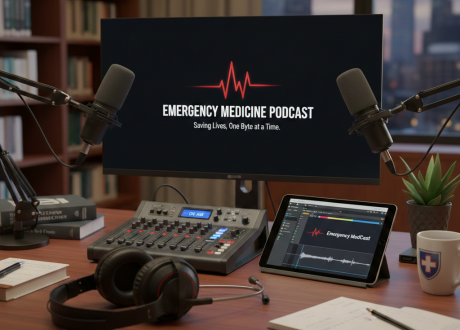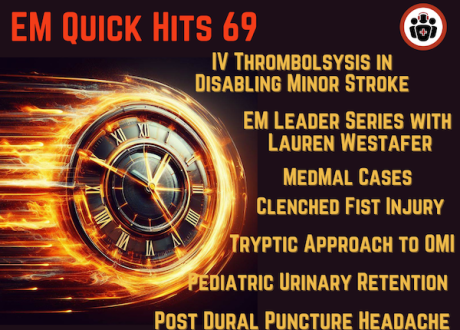June 6, 2024
Written by Shannon Markus
![]()
Physician gestalt significantly outperformed existing sepsis screening tools (SIRS, qSOFA, SOFA, and MEWS) in identifying sepsis early in critically ill, undifferentiated patients’ ED courses.
Not gonna be replaced by AI anytime soon…
The authors evaluated how physician gestalt compared to existing screening tools for the suspicion of sepsis. They included undifferentiated, non-trauma patients seen only in their designated resuscitation areas deemed to be clinically unstable (determined by EMS or nurse triage) and who were rapidly assessed. Emergency physicians were asked, “What is the likelihood that this patient has sepsis?” and completed a visual analog scale (VAS), rating their suspicion at 15 minutes; 0 = no infection, 100 = infection. VAS cutoff of >50% was compared to sepsis screening tool scores at their respective thresholds.
For the 275 patients with a sepsis diagnosis at hospital discharge, initial VAS significantly outperformed all tools. Authors included a very interesting table summarizing cases considered “misses” (initial VAS 0) who ultimately had a sepsis diagnosis, and suggested there may be a role for screening tools to be applied after initial assessment to curtail the number of “misses”.
They excluded patients seen in regular ED treatment areas, who presumably had longer times to initial physician evaluation and workup, which limits the generalizability of this study. As ideal as their process for rapid assessment of these sick patients seems, immediate physician assessment in a dedicated resuscitation bay could be limited by bed and resource availability, by reliance on accurate nursing or EMS triage, or by physician availability.
How will this change my practice?
This article further highlights the weaknesses of sepsis screening tools and reinforces the value of physicians laying eyes on sick, undifferentiated patients as quickly as possible to assess need for emergent interventions and promote early diagnosis of critical conditions. This affirms my practice of heading to the bedside quickly when there is any concern for sepsis or other critical condition and decreases my reliance on scoring systems and lab values not available early in a patient’s course.
Source
Early Physician Gestalt Versus Usual Screening Tools for the Prediction of Sepsis in Critically Ill Emergency Patients. Ann Emerg Med. 2024 Mar 25:S0196-0644(24)00099-4. doi: 10.1016/j.annemergmed.2024.02.009. Epub ahead of print. PMID: 38530675.








